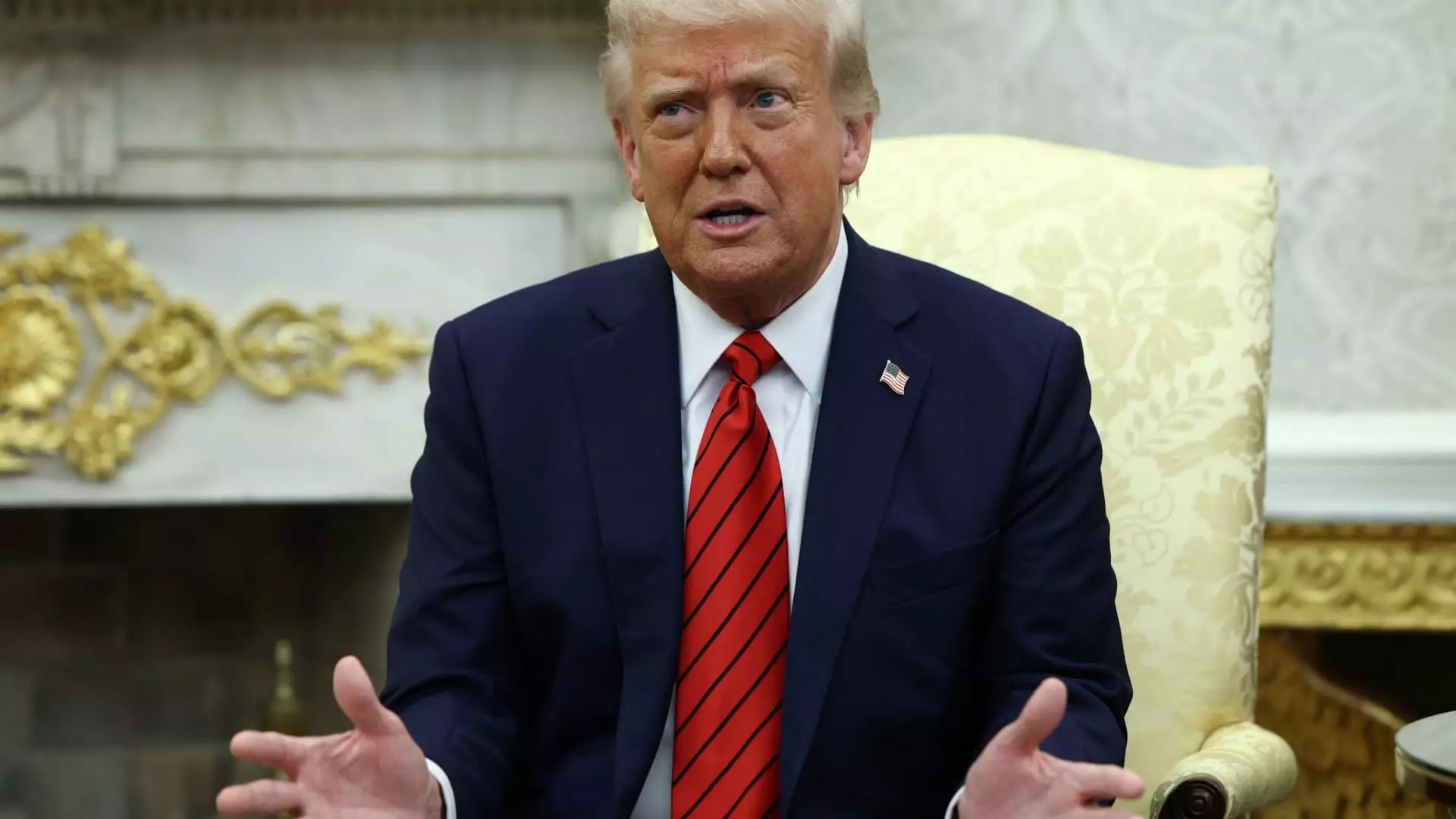As the U.S. stock market navigates through the choppy waters of trade negotiation under the Trump administration, a generalized sense of fear seems to be lifting. Many investors are left dangling in uncertainty, though, particularly with regard to their cherished stocks that could be caught in the crossfire of ongoing tariff disputes. Following Trump’s initial announcement of “reciprocal” tariffs on April 2, the marketplace has seen a stagnant drift, devoid of significant trade resolutions. It’s hard not to feel uneasy when key import levies remain on pause until July, and the looming questions of how deals will impact individual sectors remain unanswered. Amidst this backdrop, the underlying jitters of investors refuse to dissipate entirely.
Without definitive outcomes from negotiations – which, as claimed by the administration, are advancing with around 15 countries, including Japan – the air of uncertainty is palpable. Scott Welch, chief investment officer at Certuity, highlights this uncertainty by noting that despite aggressive claims from the White House, there is still a vacuous void where concrete results should be. The stock market appears tethered to the unpredictable tempo of these negotiations, raising questions about how these tariffs interlace with the details of specific agreements that could impact substantial companies. What investors crave is clarity and timelines; instead, they are met with vague platitudes that can easily erode confidence.
The Fallout from Uncertainty: Individual Stocks in Limbo
The ramifications of the unresolved tariff wars can directly affect individual corporations, as evidenced by Nvidia’s recent financial turbulence. The tech behemoth incurred a staggering $5.5 billion hit due to export limitations on its processors, marking a significant blow in investor sentiment. Following this revelation, Nvidia’s stock plummeted, encapsulating a broader trend where the fear of sudden market disruptions creates precarious conditions for public companies. Bernstein analyst Stacy Rasgon aptly encapsulated this scenario, implying that the “Trump rug” continues to create an unsettling environment for those invested in the semiconductor industry.
The interplay between speculation and tangible risk has become immensely challenging. One can’t help but wonder how future headlines – whether revolving around financing for an Alaskan natural gas project or discussions of TikTok’s sale – will sway investor confidence and subsequently, market stability. The overarching uncertainty is not just about numbers but also about how businesses interpret risks, fueling a tense atmosphere for retail investors and traders alike.
The Dismaying Impact on Global Investments
On a larger scale, the unfolding tension is shaping a bleak future for U.S. assets, prompting global investors to look elsewhere. Lawrence McDonald, the founder of Bear Traps Report, highlights how the turbulent tone of ongoing negotiations puts a strain on the appeal of American investments. This trend of pulling back from U.S. assets accentuates a precarious divergence in the market, one that could lead to a downturn if not managed properly. The influx of cash into global markets has always relied on a certain level of confidence. As that confidence wanes due to fluctuating tariff discussions, there’s potential for a downward spiral that could harm not just the stock market, but the very fabric of the economy itself.
The Earnings Season: Navigating Corporate Narratives
As the earnings season approaches, corporate executives are poised to offer insights that could inform the continuing narrative of trade conflicts. Yet the predicament is twofold; while some companies may present dual forecasts, others might avoid public projections completely. This brings about the risk of significant stock penalties, particularly in an environment already fraught with anxiety. As reported by Trivariate Research CEO Adam Parker, the market’s reaction to negative revisions has become stark, with downward adjustments being met with a disproportionate backlash. This retaliatory nature heightens the stakes for businesses and could spell trouble for those that fail to navigate their stories skillfully.
There’s a transformative pressure on companies to articulate their strategies amidst this uncertainty. Investors are not just looking for financial metrics; they seek reassurance that the companies they back have their heads well above water and are equipped to manage unfolding circumstances. It’s a tough sell, and navigating these choppy waters could soon prove to be a paramount challenge for corporate leadership.
In this tense atmosphere, the financial realm stands on the precipice of a reckoning, and the actions taken – or not taken – will undeniably shape the landscape moving forward. By recognizing the intricate connections between tariffs, individual stocks, global investments, and corporate accountability, it becomes clear that the pathways through this uncertainty are fraught with peril yet ripe with opportunity for those willing to recognize the shifts.

